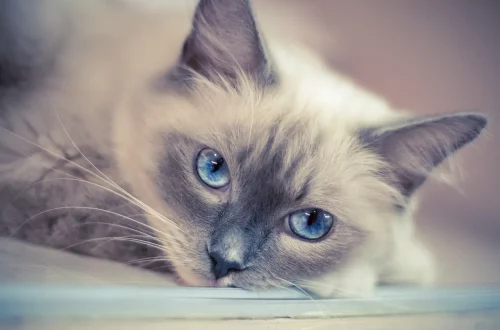
Understanding Cat Teeth Diagram: A Guide to Feline Dental Health
Understanding the dental health of our feline friends is essential for any cat owner. Just like humans, cats require regular dental care to maintain a healthy mouth and prevent various dental diseases. However, many pet owners may not fully understand the anatomy of a cat’s teeth or the importance of dental hygiene for their pets. This lack of knowledge can lead to neglecting their cat’s oral health, which may result in painful conditions that affect their overall well-being.
Cats have a unique dental structure that supports their carnivorous diet. Their teeth are specifically designed for hunting and consuming prey, which means they have sharp incisors for grasping and tearing, as well as molars for grinding. Understanding the different types of teeth and their functions can help cat owners take better care of their pets’ dental health.
Moreover, dental health is often overlooked in cats, yet it plays a significant role in their quality of life. Issues such as periodontal disease, tooth decay, and oral infections can cause pain, discomfort, and lead to more severe health problems if left untreated. By becoming more informed about a cat’s dental anatomy and health, owners can ensure their furry companions lead happier, healthier lives.
The Anatomy of Cat Teeth
Understanding the anatomy of a cat’s teeth is crucial for recognizing potential dental issues. Cats have a total of 30 teeth, which are categorized into different types based on their functions. These include incisors, canines, premolars, and molars.
Incisors are the small, sharp teeth located at the front of the mouth. Cats have six incisors on the top and six on the bottom. These teeth are primarily used for gripping and scraping, which is essential for grooming and eating. Cats often use their incisors to nibble at food or remove debris from their fur.
Next are the canines, which are the long, pointed teeth situated next to the incisors. Cats have two canines on the top and two on the bottom. These teeth are particularly important for a cat’s predatory behavior; they are designed to puncture and hold onto prey. The strength and sharpness of the canines are what allow cats to grab and immobilize their catch.
The premolars and molars, found further back in the mouth, are designed for grinding food. Cats have six premolars on the top and six on the bottom, along with two molars on the top and two on the bottom. These teeth are crucial for breaking down food, especially as cats consume meat and other tough materials. The molars also help in the efficient processing of food before it is swallowed.
Each type of tooth plays a vital role in a cat’s ability to eat and maintain proper nutrition. Understanding this anatomy can help pet owners identify any changes in their cat’s behavior when eating, which may indicate dental problems. For instance, if a cat suddenly starts dropping food while eating or shows reluctance to chew, it may be suffering from dental pain or discomfort.
Common Dental Problems in Cats
Just as with humans, cats can experience a variety of dental issues that can affect their overall health. The most common dental problems in cats include periodontal disease, tooth resorption, and gingivitis.
Periodontal disease is a progressive condition that begins with the buildup of plaque on the teeth. If not addressed, this plaque can harden into tartar, leading to inflammation of the gums, known as gingivitis. Cats with gingivitis may exhibit signs of discomfort, such as bad breath, swollen gums, and difficulty eating. If the condition worsens, it can progress to periodontal disease, where the supporting structures of the teeth become compromised. This can lead to tooth loss and may even affect the cat’s overall health, as bacteria from the mouth can enter the bloodstream and impact vital organs.
Tooth resorption is another common issue that affects many cats. This condition involves the gradual breakdown of a cat’s teeth, often starting at the gum line. The exact cause of tooth resorption remains unclear, but it is believed to be related to dental plaque and inflammation. Affected cats may experience pain and discomfort, which can make it difficult for them to eat. In severe cases, tooth extraction may be necessary to alleviate the cat’s suffering.
Gingivitis is often an early sign of periodontal disease. It occurs when bacteria in the mouth cause inflammation of the gums. Symptoms can include redness, swelling, and bleeding of the gums. Regular dental check-ups and cleanings can help prevent gingivitis and other dental issues.
Recognizing the signs of these common dental problems is fundamental for cat owners. Regular veterinary check-ups can help catch dental issues early, allowing for timely intervention and treatment. Additionally, maintaining a consistent at-home dental care routine, including brushing your cat’s teeth and providing dental treats, can significantly improve your cat’s dental health.
Importance of Regular Dental Care
Regular dental care is vital for maintaining your cat’s oral health. Just like humans, cats benefit from routine dental cleanings and check-ups. These preventive measures can help avoid serious dental issues that can arise from neglect.
One of the most effective ways to care for your cat’s teeth is through brushing. While it may take some time for your cat to become accustomed to having its teeth brushed, it is well worth the effort. Using a toothbrush and toothpaste specifically designed for cats, pet owners can help remove plaque and prevent tartar buildup. Aim to brush your cat’s teeth at least two to three times a week for optimal results.
In addition to brushing, providing dental treats and toys can also aid in maintaining your cat’s dental health. Many commercially available dental treats are designed to help reduce plaque and tartar through chewing. These treats can be a fun way for your cat to maintain better oral hygiene while enjoying a tasty snack.
Regular veterinary dental cleanings are also essential. During these professional cleanings, a veterinarian can thoroughly examine your cat’s mouth, remove tartar, and identify any potential dental issues that may require attention. These cleanings are typically recommended at least once a year, although some cats may require more frequent visits based on their individual dental health needs.
Monitoring your cat’s dental health at home is just as important. Look for any signs of dental problems, such as bad breath, difficulty eating, or swollen gums. If you notice any concerning symptoms, consult your veterinarian promptly for advice and potential treatment.
By prioritizing dental care, pet owners can help ensure their cats live long, healthy lives free from the pain and discomfort associated with dental disease.
Signs of Dental Issues in Cats
Recognizing the signs of dental issues in cats is crucial for timely intervention. Many cat owners may not realize their pets are suffering from dental problems until the condition has worsened. Being aware of the common symptoms can help ensure that your cat receives the care it needs.
One of the most noticeable signs of dental distress is bad breath, or halitosis. While it is normal for cats to have a mild odor to their breath, an unusually foul smell can indicate underlying dental problems such as periodontal disease or an infection.
Another common sign to watch for is changes in eating habits. If your cat suddenly becomes reluctant to eat or drops food while trying to chew, this could signify dental pain. Cats may also show a preference for softer foods over hard kibble if they are experiencing discomfort in their mouths.
Excessive drooling can also be a warning sign. While some cats may drool naturally, especially when they are relaxed, an increase in drooling can indicate pain or discomfort associated with dental issues. Additionally, if you notice blood in your cat’s saliva or on its food, it is essential to seek veterinary care immediately.
Behavioral changes may also indicate dental problems. A cat that is usually playful may become withdrawn or irritable if it is in pain. Similarly, you may notice your cat pawing at its mouth or rubbing its face against surfaces in an attempt to alleviate discomfort.
Regular dental check-ups with your veterinarian are essential for catching issues early. Even if your cat appears to be healthy, routine examinations can help identify potential problems before they become severe.
By being vigilant and attuned to your cat’s behaviors, you can help ensure that any dental issues are addressed promptly, allowing your feline friend to enjoy a healthy, pain-free life.
**Disclaimer:** This article is for informational purposes only and should not be considered a substitute for professional veterinary advice. For any health concerns regarding your cat, please consult your veterinarian directly.




